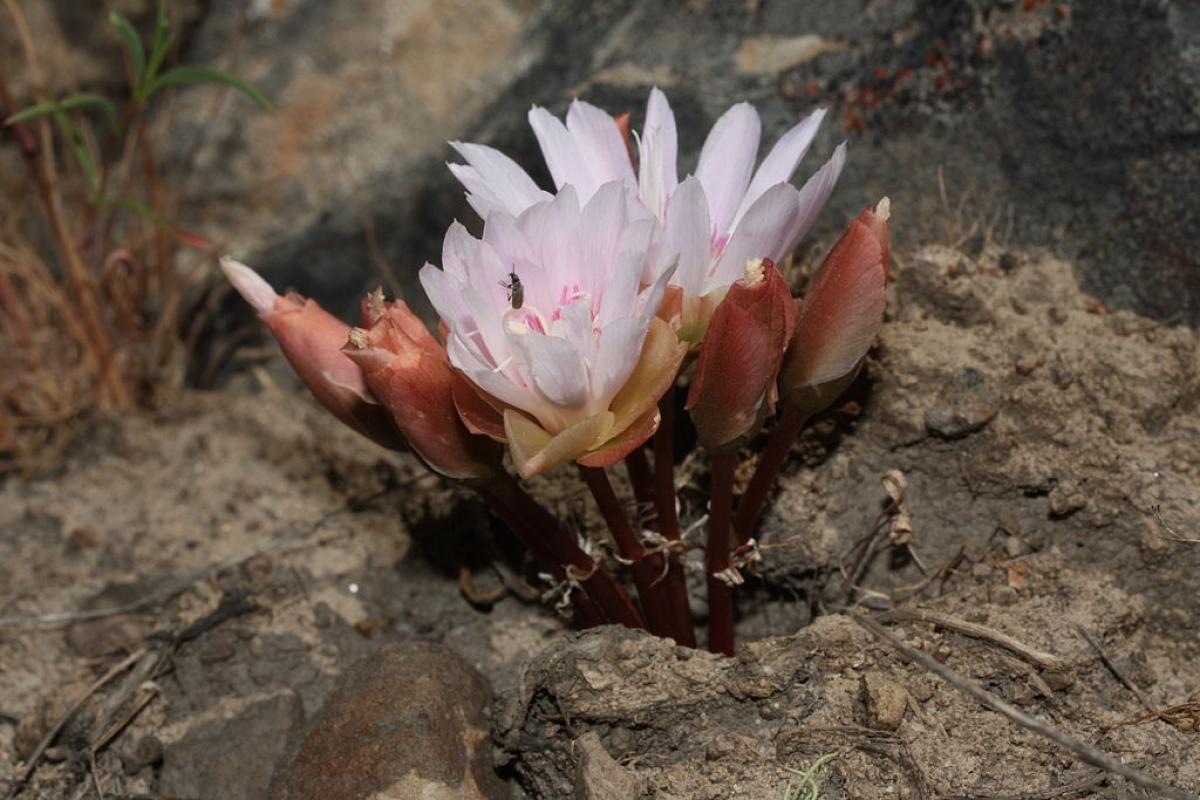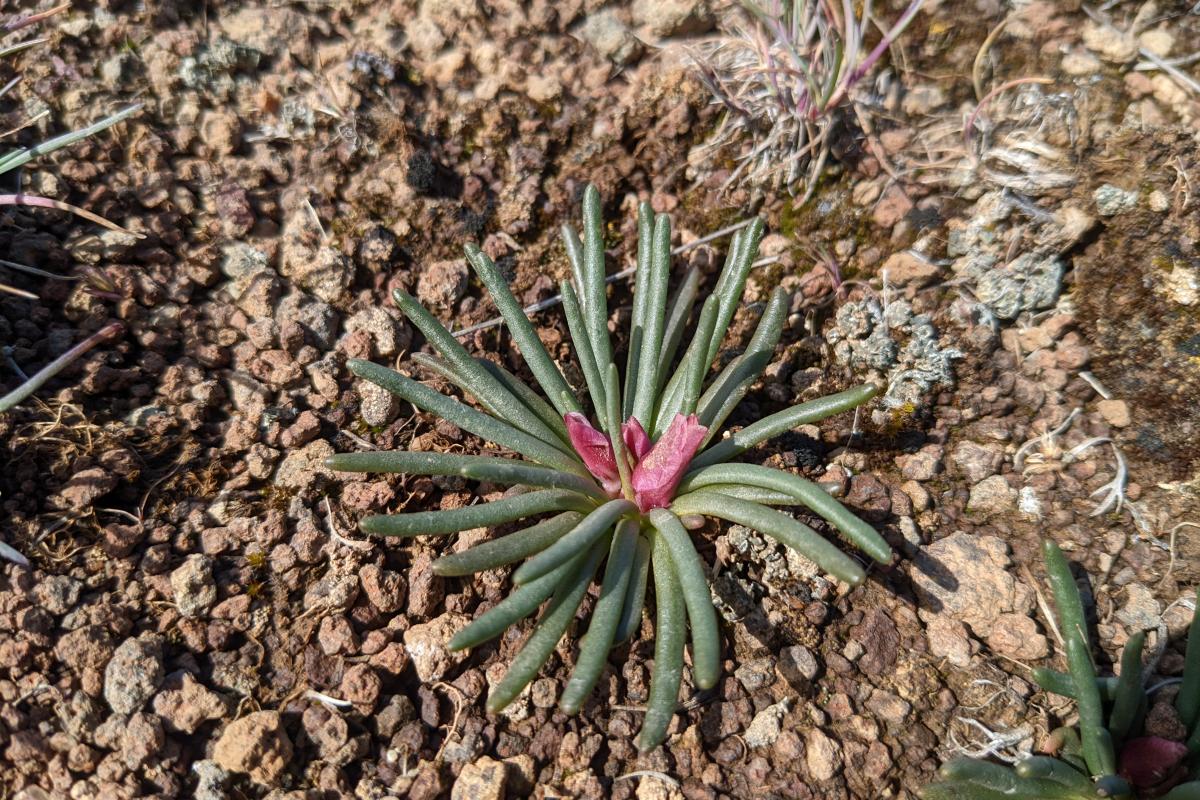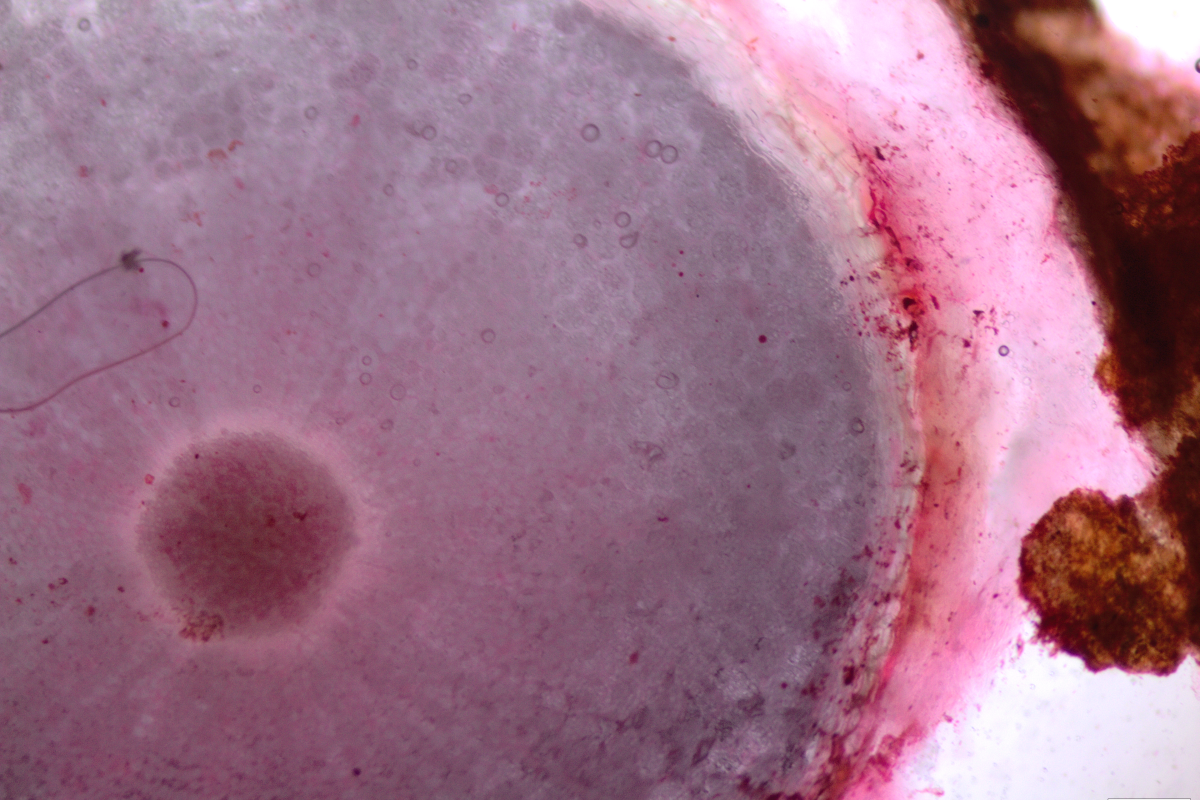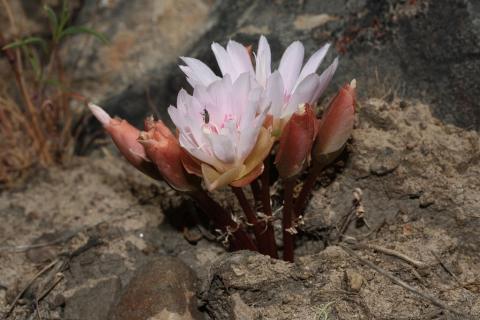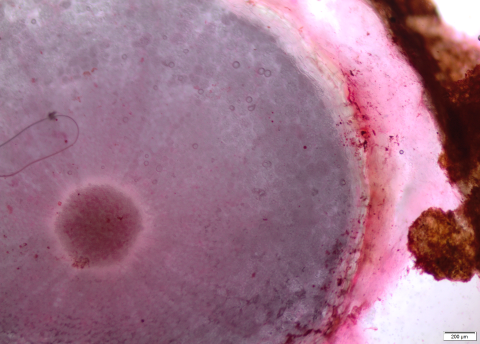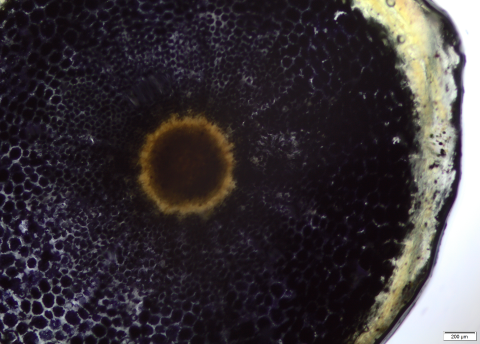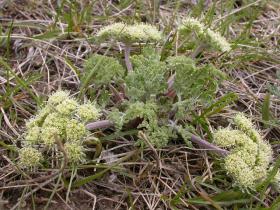Lewisia rediviva
Lewisia rediviva Push is a low stemless perennial with a branching, fleshy taproot. The leaves cluster at the surface in what's often referred to as a rosete, are small, narrow and fleshy. Between 6 to 10 flowers per plant are borne on short stems; flowers are 4 cm or more wide and vary from white to bright pink.
The root system of L. rediviva is composed of a thick, fusiform, and often forked taproot with one to many lateral roots.
For many groups, bitterroot was and still is the most important of all edible geophytes and remains a favorite food today. The roots are harvested using digging sticks in the spring before the plant flowers. Only the medium to largest roots were harvested while the smaller roots were left in the ground. Roots are peeled immediately after early springtime harvests and the “heart” or embryo of next year’s growth, removed. They can be eaten raw, prepared much like camas, or boiled, baked on hot stones, or added to a stew with meat. Roots are also often air dried for several days and stored over the winter.
Dry and gravely or sandy soils from sagebrush plains to lower mountains.

